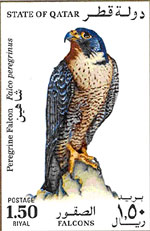
STATE OF QATAR
Location: peninsula bordering the Persian Gulf and Saudi Arabia
Capital: Doha
Area: 11,437 sq km
Coastline: 563 km
Elevation extremes:
lowest point: Persian Gulf 0 m
highest point: Qurayn Abu al Bawl 103 m
Official language: Arabic
Population: 840,290
Age structure: 0-14 years: 24.2%
15-64 years: 72.7%
65 years and over: 3.1%
Currency: Qatari Rial
Member: Arab League, OPEC, GCC
Qatar is a peninsula that projects northward for about 160 km into the western part of the Arabian Gulf and has a maximum width of 90 km. To the south and southwest are Saudi Arabia and the United Arab Emirates. Offshore there are several small islands among them ad Darafil, Umm Hbeish, Hawwar Islands. Around the coast there are extensive coral reefs and seagrass beds.
There is only one natural protected area which was set up by state authorities and by members of the ruling family to maintain stocks of large mammals such as the Arabian oryx and gazelle.
The population of 368,000 is concentrated in the capital city of Doha. Qatar’s principal cities are Msay’id, Ain Hammar, al-Samiriyya, al-Gharafa, al-Kar’ana, al-Rayyan, Umm Bab, and al-Wakrah.
The land surface, which covers some 11,437 sq km, is predominantly low-lying semi-desert, with low hills rising to a maximum elevation of 103 m in the Dukhan Heights in the west, and extensive sand dunes in the southeast.
There are no rivers or natural sources of groundwater in Qatar. Pumped groundwater supports scattered farms with trees and limited crop: vegetables, fruits, dates and grain, fish. Sheep and goats are raised for meat and dairy products. The tradition of pearl diving continues today.
The country has a desert climate with temperatures ranging from an average of 23 C in winter to
35 C in summer, when peaks of 49 C have been recorded. The humidity is very high, often reaching 90% in summer. Total annual rainfall is low and seldom exceeds 75 mm. Most of this rainfall occurs during the winter months, normally in the form of heavy thunderstorms.
Qatar has been inhabited since ancient times. It lies on the trade route between east and west and it found commercial prosperity in early times. In the mid 7th C, Islam became the dominant religion in Qatar, and Qataris had a role in spreading Islam across the seas to the Indian subcontinent. At the beginning of the 16thC, Qatar came under Portuguese rule. In 1776, it came under British control.
From 1868 and until the present, Qatar has been ruled by the Al Thani family, who had lived in Qatar for 200 years. In 1971 Qatar gained independence from Britain and joined the Arab League.
Industries in Qatar were nationalized in 1975, including the Anglo-American petroleum companies. Qatari nationals fill important posts in joint venture undertakings.
Qatar has one of the highest per capita incomes in the world due to its oil and recently discovered natural gas reserves at North Field, off the northeast coast. They are the third largest proven reserves in the world.
In 1994, Qatargas, a project to liquefy 9 billion cubic meters to obtain 6million tons of liquid natural gas, was begun. A project to pipe the gas to Pakistan is under way.
All Qatar’s heavy industries projects include an oil refinery, a fertilizer plant , a steel plant and a petrochemical plant that exports ethylyn and polyethylyn to China, as well as desalination plants.
On June 20.1995, Sheikh Hamad bin Khalifa al Thani took over government when he overthrew his father in a bloodless coup.
Cities: Doha
Nature reserves:
Qatar’s Constitution,Universities, Tourism


